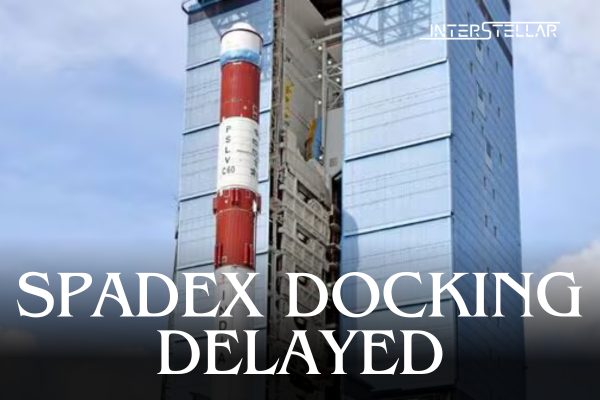ISRO Delays SpaDeX Docking: Latest Updates
ISRO delays SpaDeX Docking experiment, which was originally set to begin at 8:00 AM on January 9, 2025. The decision follows a slight deviation in the planned satellite manoeuvre, delaying the event to an unspecified time.
ISRO explained that Spacecraft A began drifting closer to its target, reducing the distance from 500 metres to 225 metres. However, after the non-visibility period, the drift exceeded expectations, prompting the delay. In a post on X (formerly Twitter), ISRO confirmed the safety of the satellites and assured that further updates would follow.
This marks the second postponement of the docking experiment, which was initially scheduled for January 7. The earlier delay was caused by the identification of an abort scenario. To ensure the mission’s success, ISRO conducted additional ground simulations before rescheduling to January 9.
Why SpaDeX Docking Matters for India
SpaDeX is a critical milestone in India’s space ambitions. Docking technology enables larger space structures, satellite refuelling, long-term maintenance, and sustainable exploration. It also supports sample return missions and reduces space debris, making space operations safer and more efficient.
For India, mastering docking technology will pave the way for advanced projects like Chandrayaan-4, the Bharatiya Antariksh Station, and Gaganyaan. These missions rely on autonomous docking capabilities for success. SpaDeX’s achievements will directly contribute to developing the Bharatiya Antariksh Station and advancing India’s human spaceflight programme.
The Impact of SpaDeX on Future Missions
SpaDeX aims to validate autonomous in-space docking technology, which is vital for long-term satellite servicing. This capability extends the operational life of satellites and minimises the growing issue of space debris. It also enables complex manoeuvres like crew transfers and assembly of space infrastructure.
By mastering docking, India can establish the Bharatiya Antariksh Station, join the elite club of advanced space-faring nations, and significantly enhance lunar exploration and interplanetary missions. Furthermore, docking technology will ensure safer human spaceflights, expand satellite servicing capabilities, and boost sustainable exploration initiatives.
In short, SpaDeX represents a leap forward for India’s space exploration capabilities, equipping ISRO with cutting-edge tools to achieve its ambitious goals.
with inputs from Reuters





